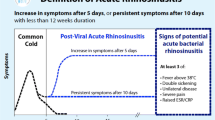Abstract
The present work was undertaken to study the association of epistaxis with hand dominance and blood group. The present cross sectional study was conducted among 360 cases of epistaxis who reported to the E.N.T outpatient department of tertiary care centre in central India during the period of July 2014 to July 2015. Examination was carried out by self prepared Performa which included demographic information, detailed history and clinical examination findings. Total of 360 patients were included in the study, the mean age being 31.2 years of which there were 208 males and 152 female. Most of the patients (48.9 %) presented with 4–6 episodes of nasal bleed per year. In present study, local trauma (22.2 %) followed by nose picking (16.7 %) were the commonest local etiological factors while Idiopathic thrombocytopenic purpura, pancytopenia etc. (15.6 %) being the commonest of general causes followed by hypertension (13.4 %). The study showed highly significant association of A+ve blood group with epistaxis (p = 0.002). Most of the patients (54.8 %) presented bleeding episodes mainly in summer season. In our study we found statistically significant (p = 0.0001) association of hand dominance and side of nasal bleeding. Anterior nasal bleeding was significantly more presenting symptom in all epistaxis patients. This study underlines the importance of epistaxis as the most frequent emergency diagnosis in ENT. The observed association of A+ve blood group and Hand dominance in epistaxis provokes to have further large scale studies in this area.



Similar content being viewed by others
References
The American Heritage (2002) Stedman’s medical dictionary. Houghton Miffin Company, Boston
Watkinson JC (1998) Epistaxis, 6th ed. Chapter 18. In: Alan GK (ed) Rhinology, Scott Brown’s otorhinolaryngology head and neck surgery. Butterworth Heinemann, Oxford, pp 942–961
Jackson KR, Jackson RT (1988) Factors associated with active, refractory epistaxis. Arch Otolaryngol Head Neck Surg 114:862–865
Timsit CA, Bouchene K, Olfatpour B, Herman P, Tran Ba Huy P (2001) Epidemiology and clinical findings in 20,563 patients attending the Lariboisiere Hospital ENT Adult Emergency Clinic. Ann Otolaryngol Chir Cervicofac 118:215–224
McGarry GW (2008) Epistaxis, 7th ed. Chapter 126. In: Gleeson M (ed) Scott Brown’s otorhinolaryngology head and neck surgery. Hodder Arnold, London, pp 1596–1608
O’Donnell M, Robertson G, McGary GW (1999) A new bipolar diathermy probe for the outpatient management of adult acute epistaxis. Clin Otolaryngol 24:537–541
Stell PM (1977) Epistaxis. Clin Otolaryngol 2:263–273
Amusa YB, Akinpelu OV (2009) A retrospective analysis of aetiology and management of epistaxis in a south-western Nigerian teaching hospital. West Afr J Med 28(3):165–168
Danielides V, Kontogiannis N, Bartzokas A, Lolis CJ, Skevas A (2002) The influence of meteorological factors on the frequency of Epistaxis. Clin Otolaryngol 27:84–88
Varshney S, Saxena RK (2005) Epistaxis: a retrospective clinical study. Indian J Otrolaryngol Head Neck Surg 57:125–129
Hussain G (2006) Evaluation of aetiology and efficacy of management protocol of epistaxis. J Ayub Med Cell 18(4):63–66
Joice P, Ross P, Robertson G, White P (2008) The effect of hand dominance on recurrent idiopathic paediatric epistaxis. Clin Otolaryngol 33:570–574
Hardyck C (1977) Left handedness. Psychol Bull 84:385–404
Author information
Authors and Affiliations
Corresponding author
Ethics declarations
Conflict of interest
Leena Jain declares that she has no conflict of interest. Sadat Qureshi declares that he has no conflict of interest. Ashish Maurya declares that he has no conflict of interest. Shalini Jadia declares that she has no conflict of interest. Mrityunjay S declares that he has no conflict of interest.
Ethical Approval
All procedures performed in studies involving human participants were in accordance with the ethical standards of the institutional and/or national research committee and with the 1964 Helsinki declaration and its later amendments or comparable ethical standards.
Informed Consent
Informed consent was obtained from all individual participants included in the study.
Rights and permissions
About this article
Cite this article
Jain, L., Qureshi, S., Maurya, A. et al. Hand Dominance and Blood Group: Association in Epistaxis. Indian J Otolaryngol Head Neck Surg 69, 121–124 (2017). https://doi.org/10.1007/s12070-015-0934-4
Received:
Accepted:
Published:
Issue Date:
DOI: https://doi.org/10.1007/s12070-015-0934-4




